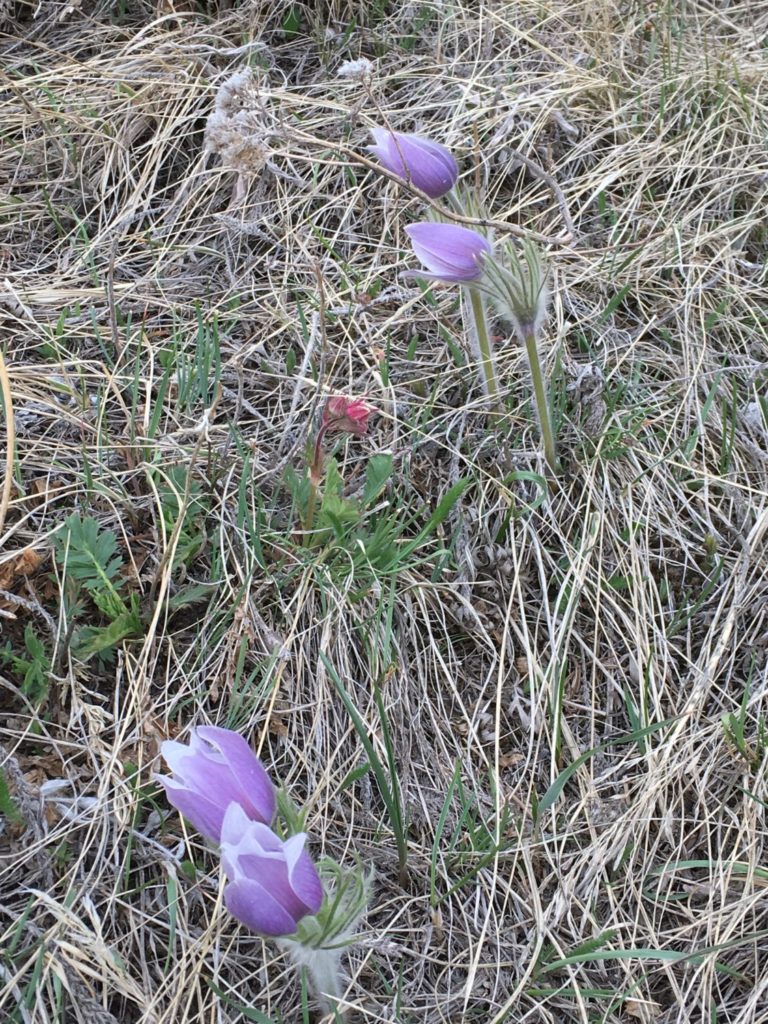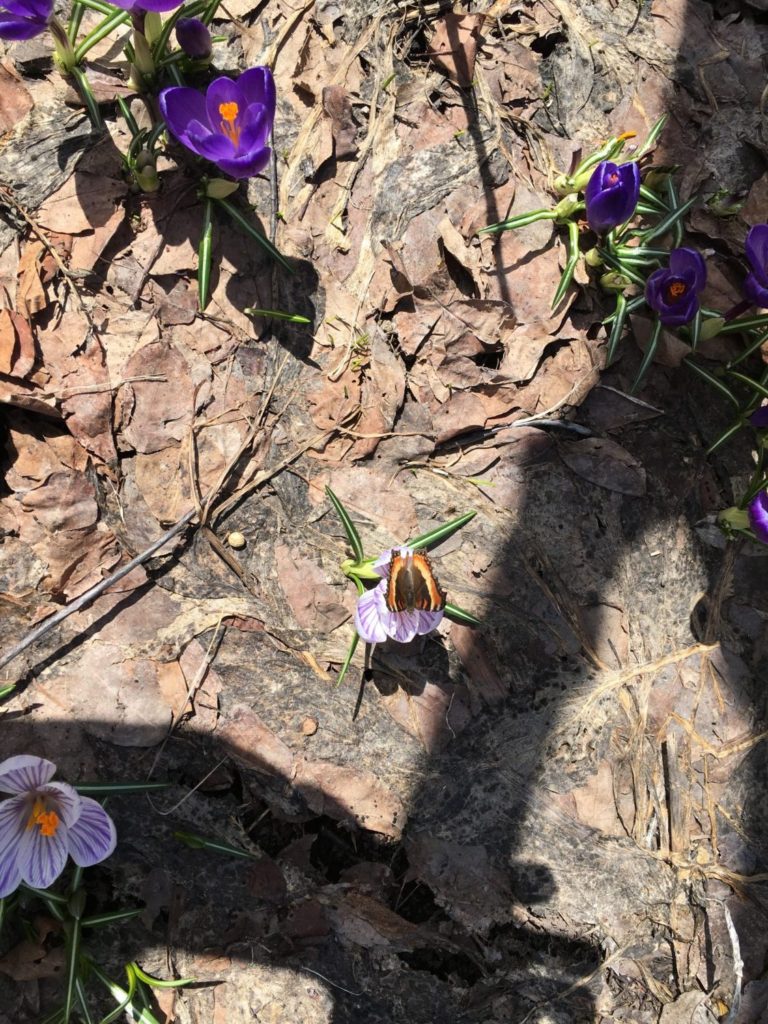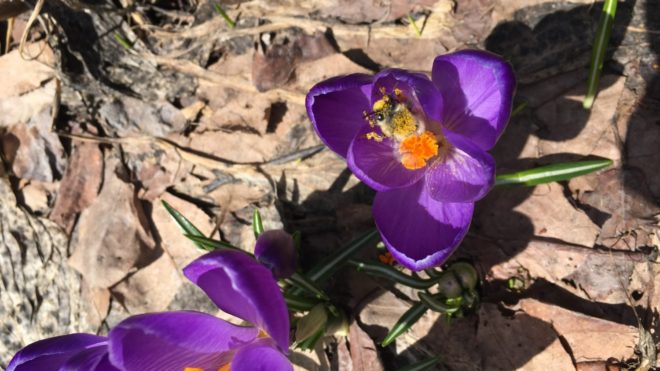In a thicket of thorn apple trees, a single tree-twig of a chokecherry tree unfurled its leaves. The first leaves I have seen this spring! They are green and rimmed with red. This little twig-tree, as tall as a medium sized cat, stands proud, there in its little clearing.
After the long winter we’ve had in north central Montana, this little twig-tree is a sight for sore eyes, indeed. Winter has ended (I hope), and spring begun all in one day, it seems. Snow banks still hang out in the low places where snow piled up deep. The land looks like a pinto horse. The hills are brown and spotted with the isolated patches of white snow banks. I look to find a favorite coat pattern, if I were to have a pinto horse.
Look close, though, and blades of green grass spear upwards. A green cast lies over the creek bottoms, and in protected sunny areas. The horses refuse the hay they have been eating all winter. Once the green grass begins, that is all they want. They roll to help their itchy winter hair shed quicker, and leave a tangled mesh of old hair on the ground. Birds will weave it into their nests. It is always great fun to find an empty bird nest later in the summer and say, this hair is Smokey’s, or Whisper’s, or Ranger’s. The birds even turn up with single coarse tail hairs from the horses. How they spot them, I do not know. I am pretty sure they do not pull them from the horse’s tails, for the horses would not agree too well with this.
Besides the grasses that stretch skyward and the leaves that unfold from the twig-tree, there are others that are coming alive.

“Who can see the first crocus?” Mom asked as she tied scarves over the heads of my sister and I when we were small. We squirmed and pushed against her hands, our short legs anxious to run across the hills as we searched for the early buds. We always called them wild crocus. I think I was in high school before I knew they had another name, and had a hard time getting my tongue around “pasque flower”. Today I still call them wild crocuses. Their short stems and buds are furry, no wonder considering how cold it can be when they pop above the ground. They are tough, a reflection of the people who live on this land. We have to be. The wild crocuses withstand one day of 78 degrees, then the next day could bring several inches of snow and below freezing temperatures for a few days, before the sun melts the snow off again. The little crocuses spring up, and open their periwinkle blue flowers wide. Wild crocuses do resemble tame ones:


Domestic crocuses are shorter and have the same general shape. They come in lots more colors, though. Deep purple, marigold, yellow, and white-and-purple stripes. They rest in their garden or lawn on smooth stems, petals rounded and uniform in shape. Wild crocuses talk to the breeze. Their furry stems and sharper petals sway in the wind. Raindrops bead on their green-grey fur. Domestic crocuses are beautiful. But they are to wild crocuses as the sedate hot house rose with no scent is to the fey wild rose whose rouge scent colors the wind.
How bees know when to wake up is another mystery. For as soon as there are blossoms, here are the bees. And butterflies. It is something to think about; how the earth wakes up all of the beings that live in it. Is there a message that travels through the earth itself to shake the plants, trees, bugs, and animals awake? I know for sure I come to life when the grass greens up, and I see the first leaves and blooms of the year. When no one is looking, I skip through petal-scented air. It is a surge of energy that flows through everything. Young animals are frisky and play mock battles with one another. Even the old stiff horses jump about as best they can, and snort, and run. Beside them, the hoof beats of their younger selves thunder, keeping time.
Look close on the land, and there are other things that come alive in the spring.

A yellow fritillary hangs out next to a standing stone. Not on this day, but two days ago when it was hot enough for the first sunburn of the year, this stone radiated its own heat outwards. Today, it is cool as an occasional snowflake settles on it before melting into an almost invisible droplet of water. Another early wild flower is the wild sweet pea.

They smell as sweet as their name. They are companionable plants; they grow in big round-ish flower groves. Sometimes the hillsides and prairies look like a Van Gogh painting from a distance. The yellow swaths of wild sweet peas melt across the land in patches and swirls.
The earth is waking up once again from its winter rest. It makes me wonder about the tropics, where things are always growing and the sun is hot all the time. Do you suppose the earth gets weary there, in all the abundance it creates? Perhaps the energy it nurtures during our dark times flows there, too. In the dark of our winters, I regenerate after the non-stop doing of light filled summers. Maybe it is the temperate and polar regions of the earth that support the life of the tropics, as well as their own regions in their times of awakening.

